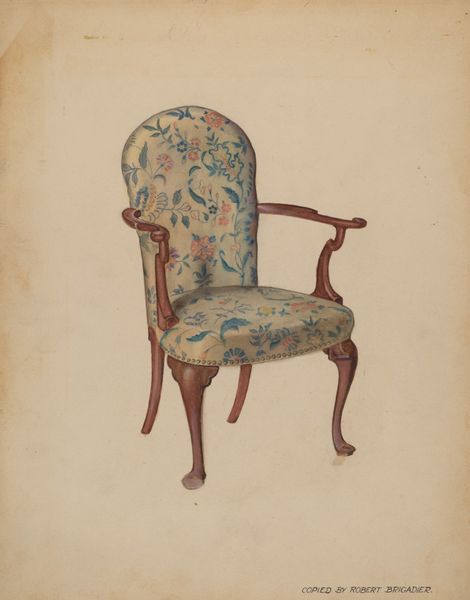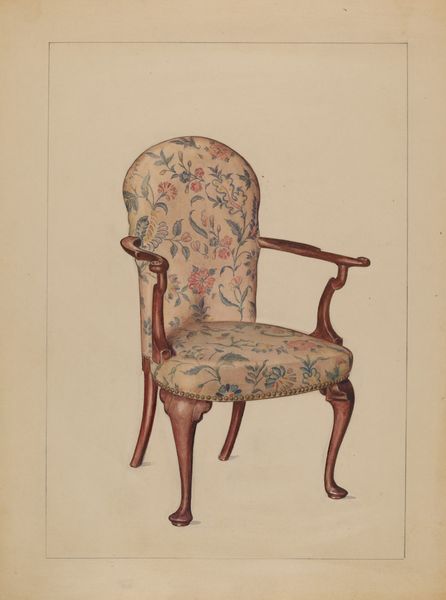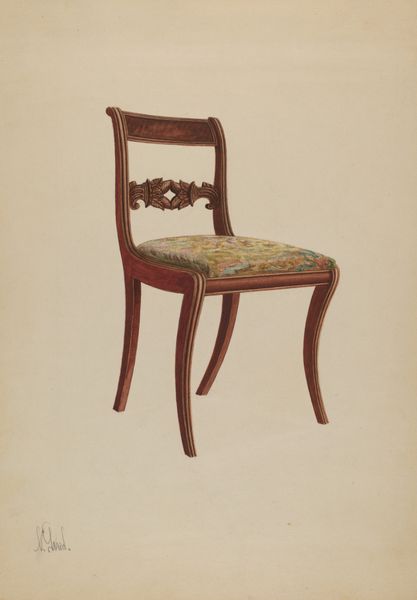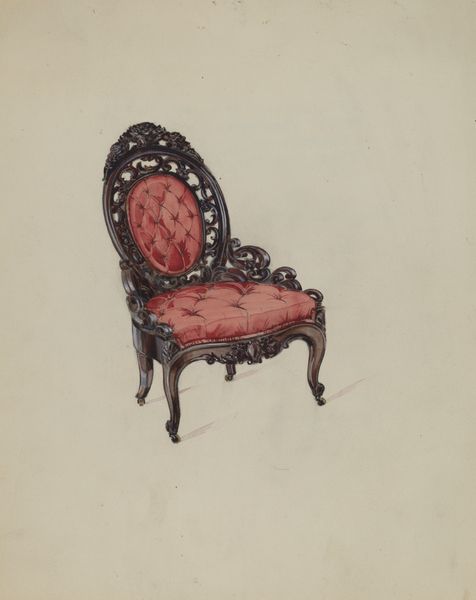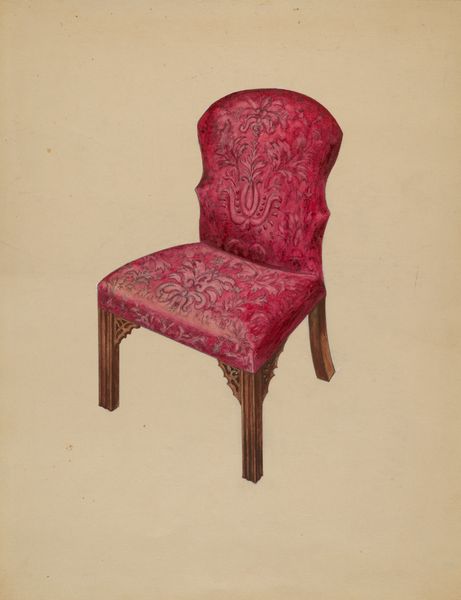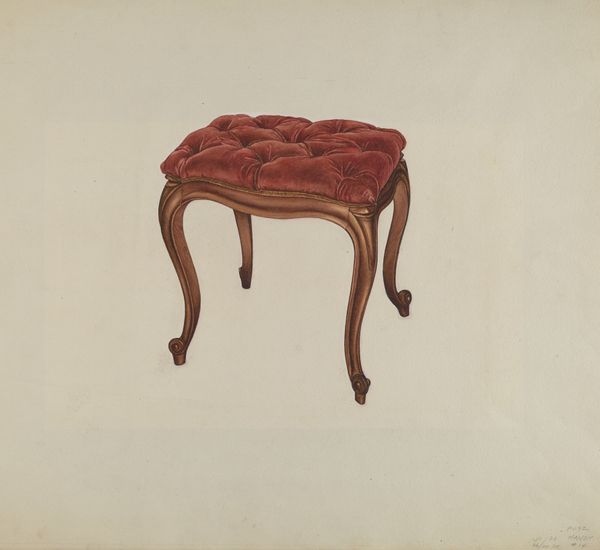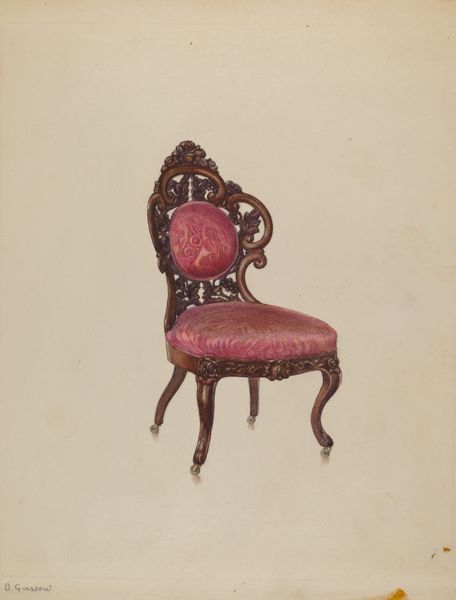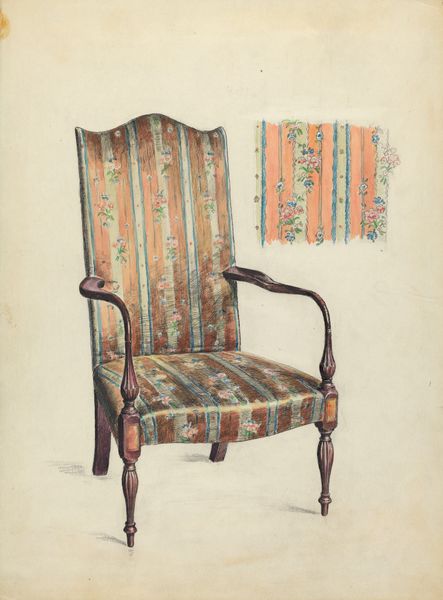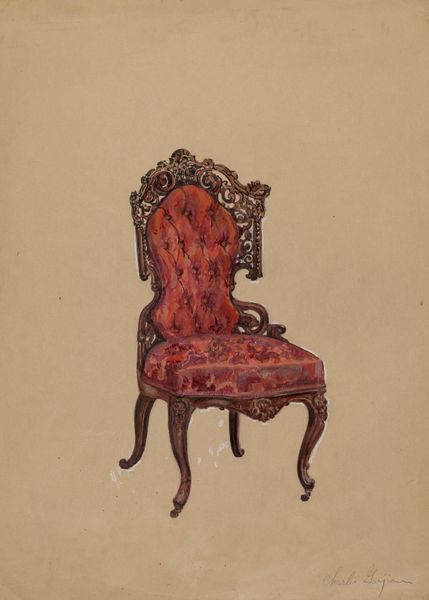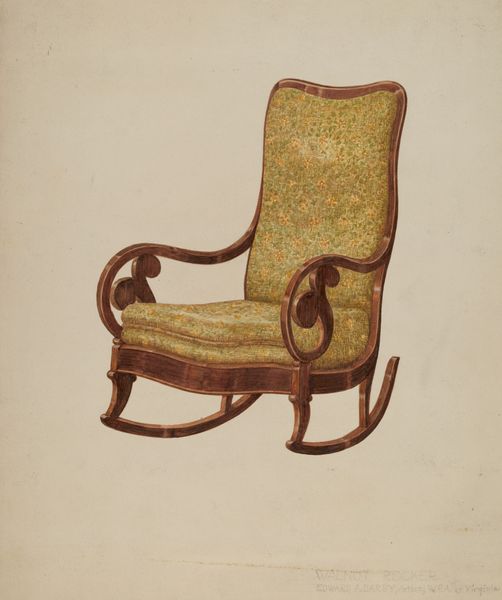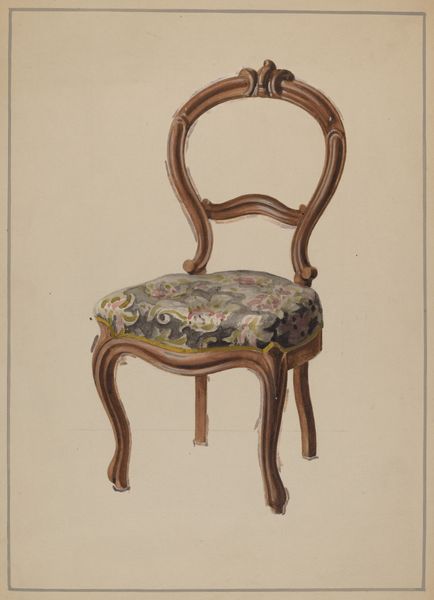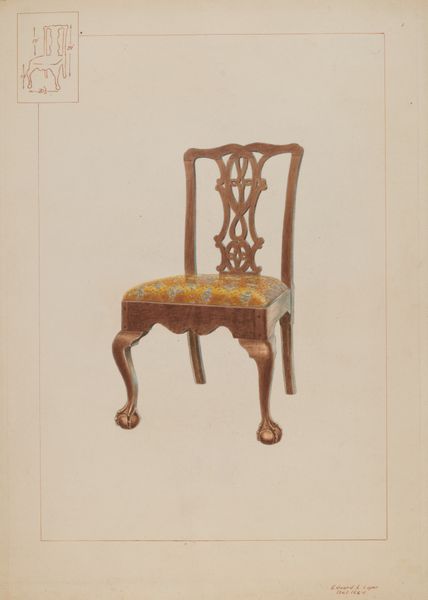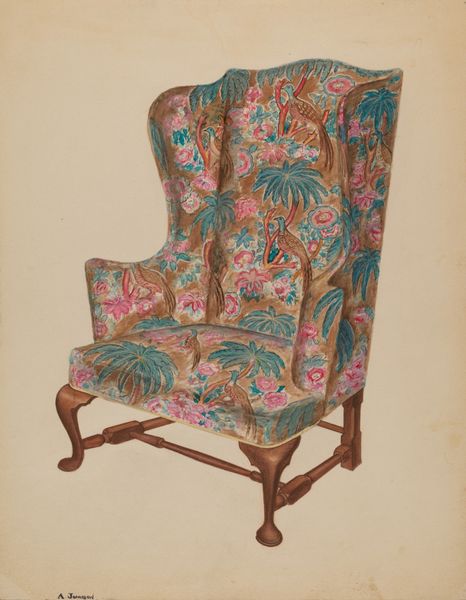
drawing, coloured-pencil
#
drawing
#
coloured-pencil
#
coloured pencil
#
decorative-art
#
watercolor
Dimensions: overall: 35.2 x 24.4 cm (13 7/8 x 9 5/8 in.) Original IAD Object: 35"high, 16"wide, 15 1/2" deep
Copyright: National Gallery of Art: CC0 1.0
Curator: This piece is titled “Chair,” a drawing created circa 1936 by Florence Huston. It's rendered in colored pencil and watercolor. Editor: There's a quiet charm to this chair. The detail in the woodwork suggests a solid craftsmanship, but the overall palette feels subdued, almost wistful. Curator: The period between the wars, particularly during the Depression, saw both a revival and critique of decorative arts. This drawing, while depicting a rather ornate chair, invites reflection on themes of comfort, status, and accessibility. The chair's aesthetic gestures towards both luxury and utility. Does it symbolize the hopes of the burgeoning middle class? Editor: The fabric seems hand-blocked; a technique employed across cultures that is frequently overlooked. Perhaps the floral print signals some optimism against the bleak economic backdrop of the period, and how women artists negotiated interior design and domestic roles. It feels intentionally delicate against a sturdier framework, perhaps a symbol of some fragility. I notice how the artist focused on detail, such as in the floral design; this could indicate a conscious choice to honor what they deemed to be significant to them. Curator: Interesting point. During this time period, we can't overlook the socio-political forces at play. Consumerism, in many ways, influenced production and the reception of artwork. Editor: It seems a simple drawing at first glance, but its story of craftsmanship highlights how socio-economic factors intersect and come to inform both an artist’s chosen themes as well as their approaches. What else did you notice about the piece’s social or historical implications? Curator: Thinking about class dynamics as demonstrated by an artist’s personal choices has widened my appreciation for both their subject matter and stylistic leanings. Editor: For me, I will consider it a reminder of the importance of contextualizing everyday objects through the intersections of gender and class in artwork.
Comments
No comments
Be the first to comment and join the conversation on the ultimate creative platform.
